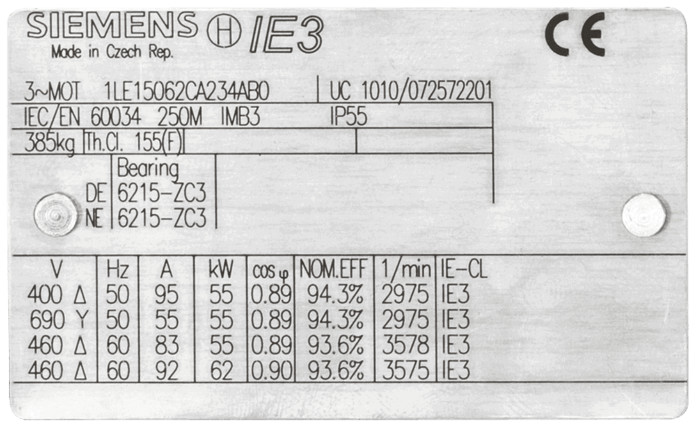If you know how to read a motor nameplate, you can be able to choose the best motor for the job, identify a motor’s performance characteristics and applications, and assist in the resolution of operational issues.
That is why, most nameplates are made of steel or aluminum for long-term durability, and the information on the plate is engraved for readability throughout the motor’s life.
Installation and wiring connections, matching an appropriate variable speed drive, and repairing or replacing the motor all require nameplate information.
In this article, I am going to make you understand, the key information available on the motor nameplate data with the help of an illustration.
How to read a motor nameplate?
Manufacturer
This field has no standard design, and it may vary from one manufacturer to the other.
It may indicate the motor model, electrical style, or function.
Other emblems of other agencies, such as the UL recognition label, the ‘CE’ mark for the European Community, and the Canadian Standards Association logo, are occasionally visible on the nameplate.
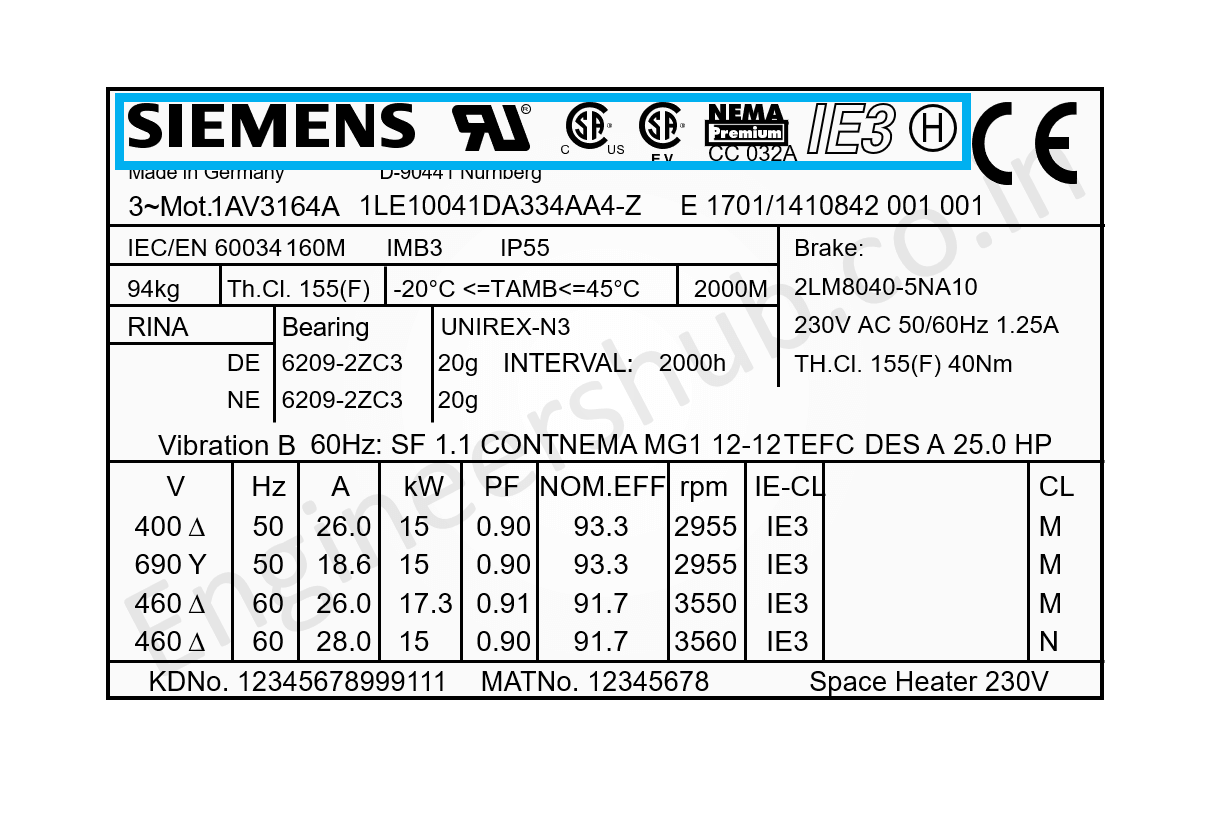
Number of Phases
A motor is available in single-phase and three-phase. Most of the industrial installations would be of three-phase and hence the motor used would be of three-phase. However, for very small applications (requiring less than 1 HP) single-phase motors can be used.
It is important to know the number of phases of a motor to choose the required power source. Also, you can determine the number of cores required in the power cable.
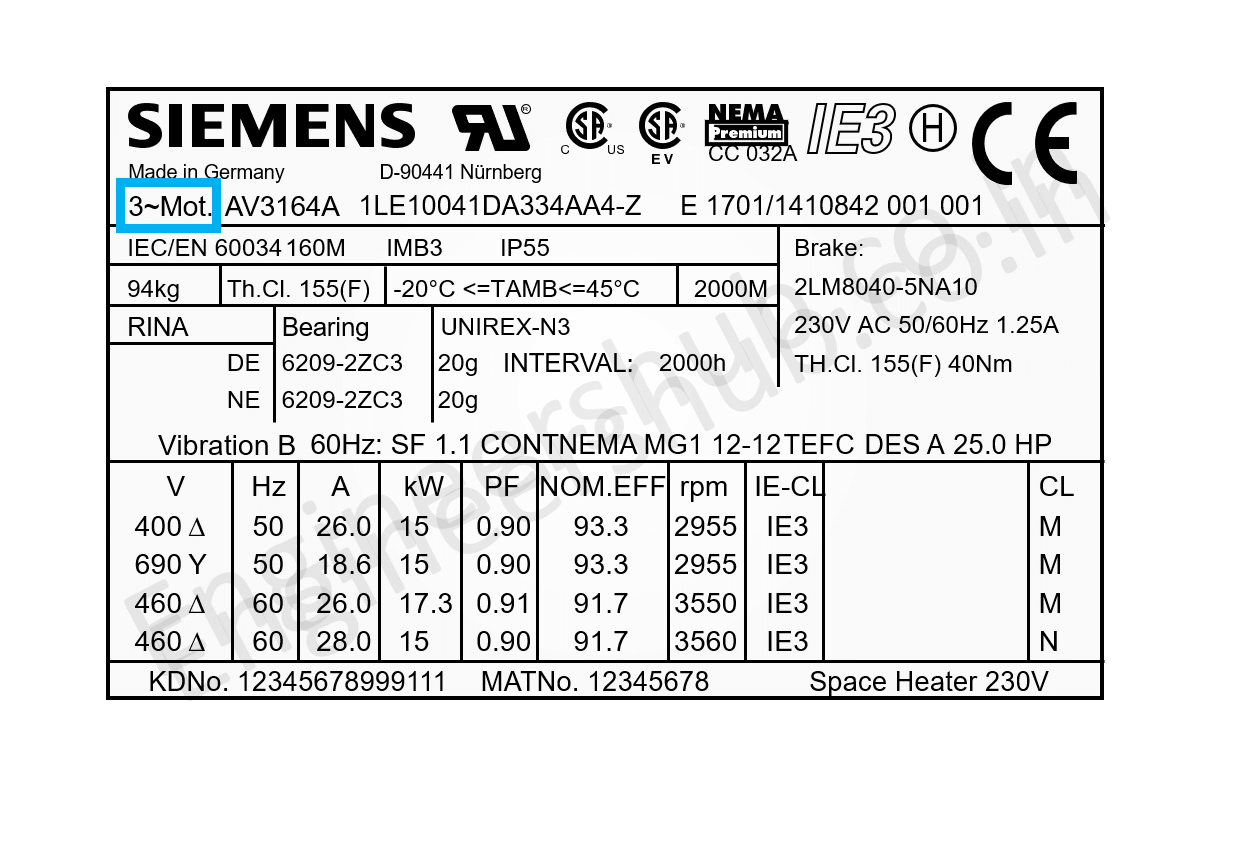
Rated Voltage
The voltage at which the motor is meant to function most efficiently is indicated by this data. The motor’s nameplate-defined specifications are at rated voltage and frequency, including power factor, efficiency, torque, and current.
You should always match the supply voltage with the motor’s rated voltage.
The performance of the motor will be harmed if it is operated at voltages different than those specified on the nameplate.
Let us take an example.
In the example below, you can see the manufacturer has mentioned different voltage levels. If you give 690 volts in delta connection at 50 hertz, can damage the motor severely.
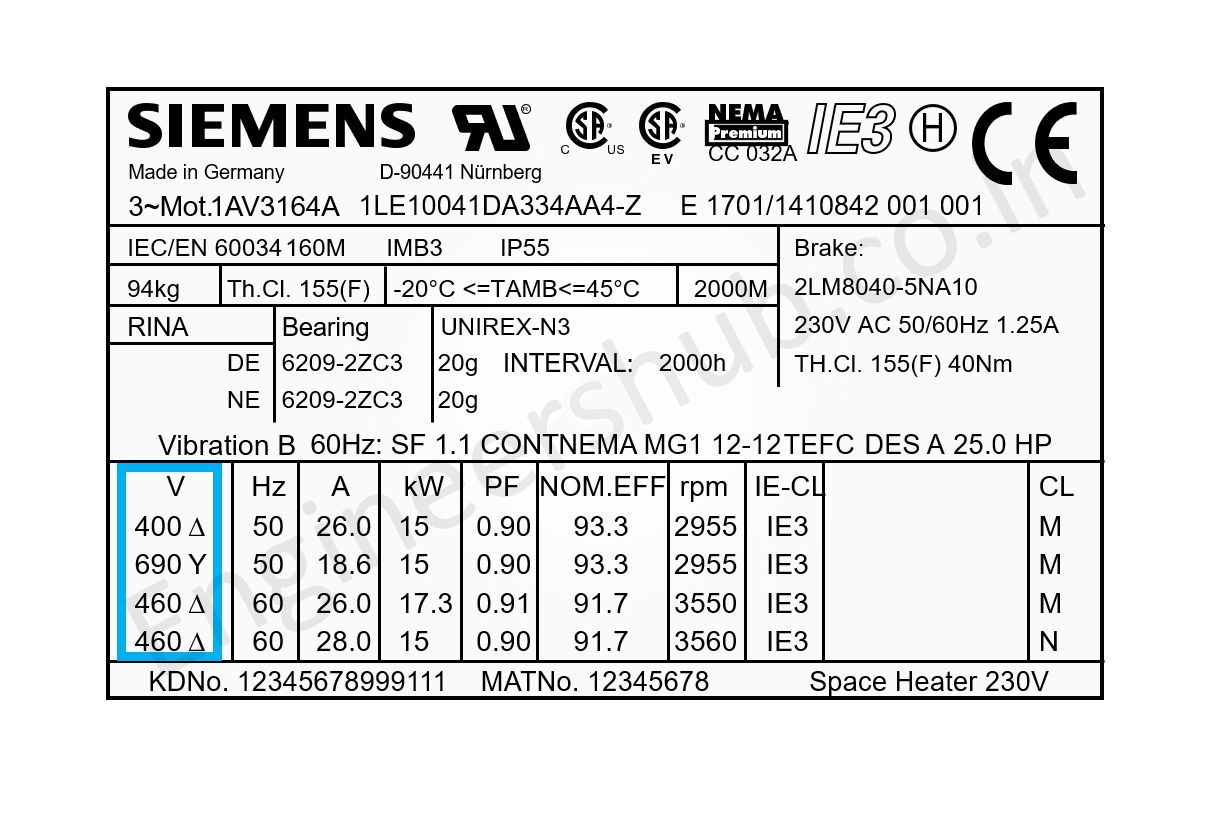
Rated Ampere
The amount of current the motor is designed to draw at the rated load and rated voltage is measured in full-load amps.
The nameplate full load current (abbreviated as FLA) is used to determine the appropriate wire size, motor starter, and overload protection devices for the motor.
It would be easy to predict any abnormality by comparing the current when the motor is operational with FLA.
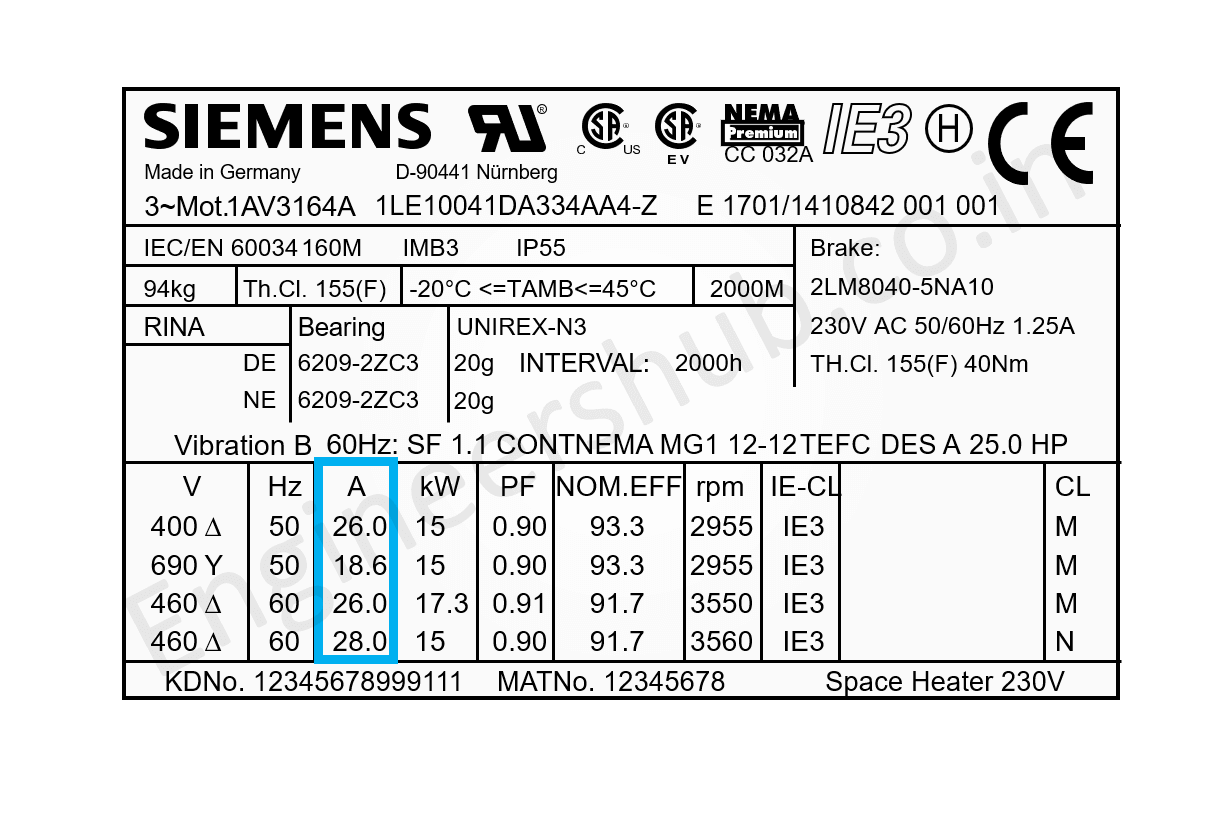
Rated Full load Speed (R.P.M.)
For the specified voltage and frequency, the rated full load speed is the speed at which the motor operates at full load torque.
In the below example, the motor can operate at 50 Hz as well as at 60 Hz. For both the frequencies, the rated full load speed is mentioned.

Rated Frequency
The frequency of the motor must match the frequency of the power system (supply) to function properly.
Power supply with 60 Hz is most commonly used in the United States, Canada, and some other countries while 50 Hz is commonly used in India.
The motor marked only with a 60 Hz power supply cannot work on 50 Hz.
However, you may find motors able to work on more than one frequency.
In the below example you can see two different frequencies. The motor can work at 50 Hz as well as at 60 Hz. For both the frequencies, the other parameters that differ are also shown.
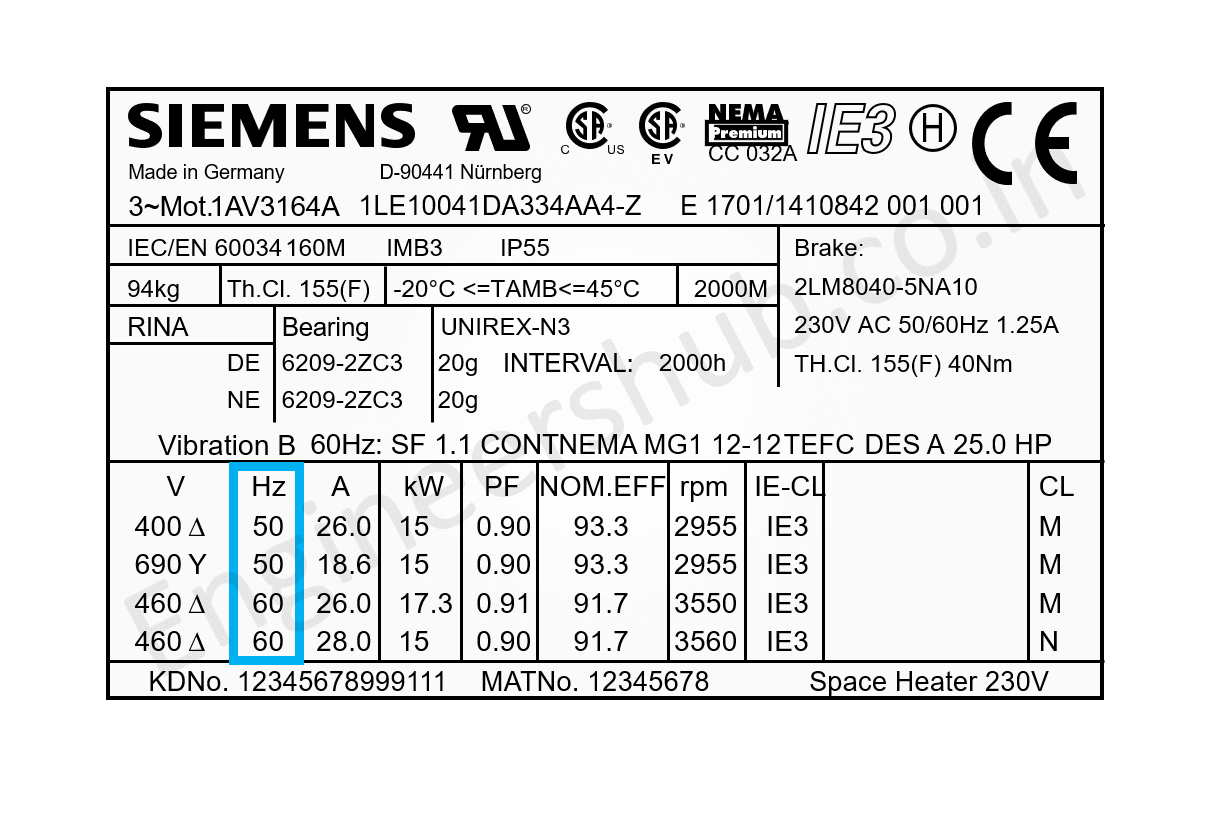
Rated Power (in kW)
The rated power of the motor mentioned on the nameplate is the output power delivered at rated voltage and frequency.
Here, you need to remember that the power in kW mentioned on the motor is not the input power. It is output power or you can say shaft power.
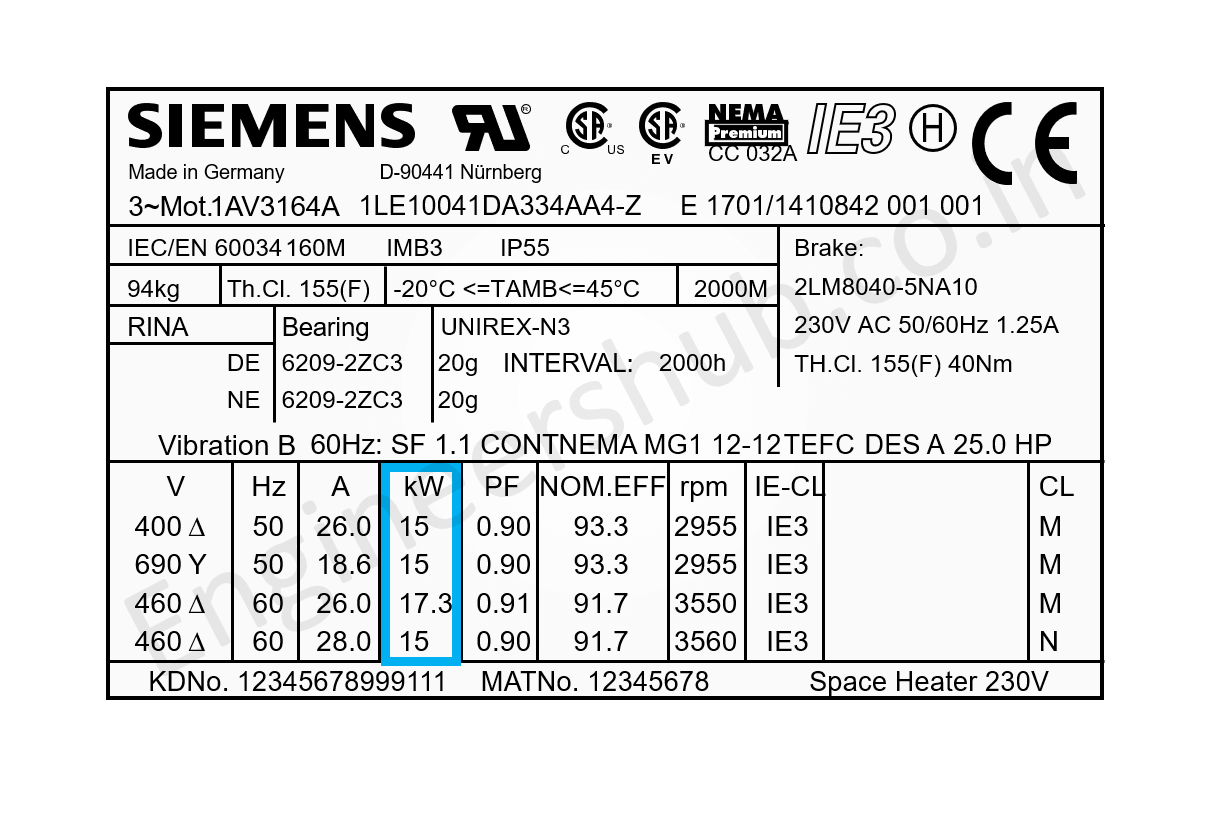
Power factor
The ratio of active power to apparent power is Power Factor expressed in percentage. Variation of load on motor varies power factor.
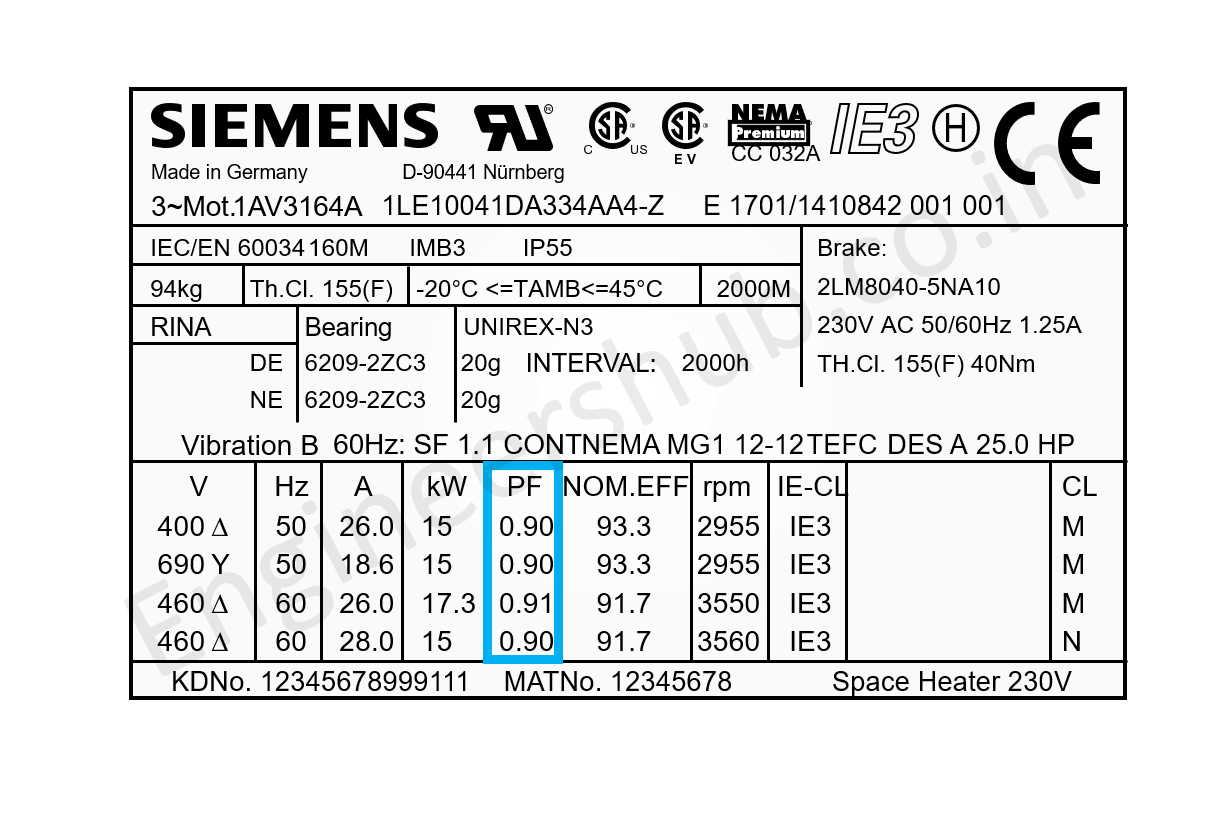
Efficiency
Efficiency can be calculated by dividing output power by input power and then multiplying by 100. Efficiency is one of the important information provided on the motor nameplate. The more efficiency the lesser the power consumption of the motor.

Article Number / Model Number
Each manufacturer has a unique style of coding the model number/article number. It includes information like the type of ventilation, efficiency code, type of housing, terminal box position, number of poles, type of construction, etc.
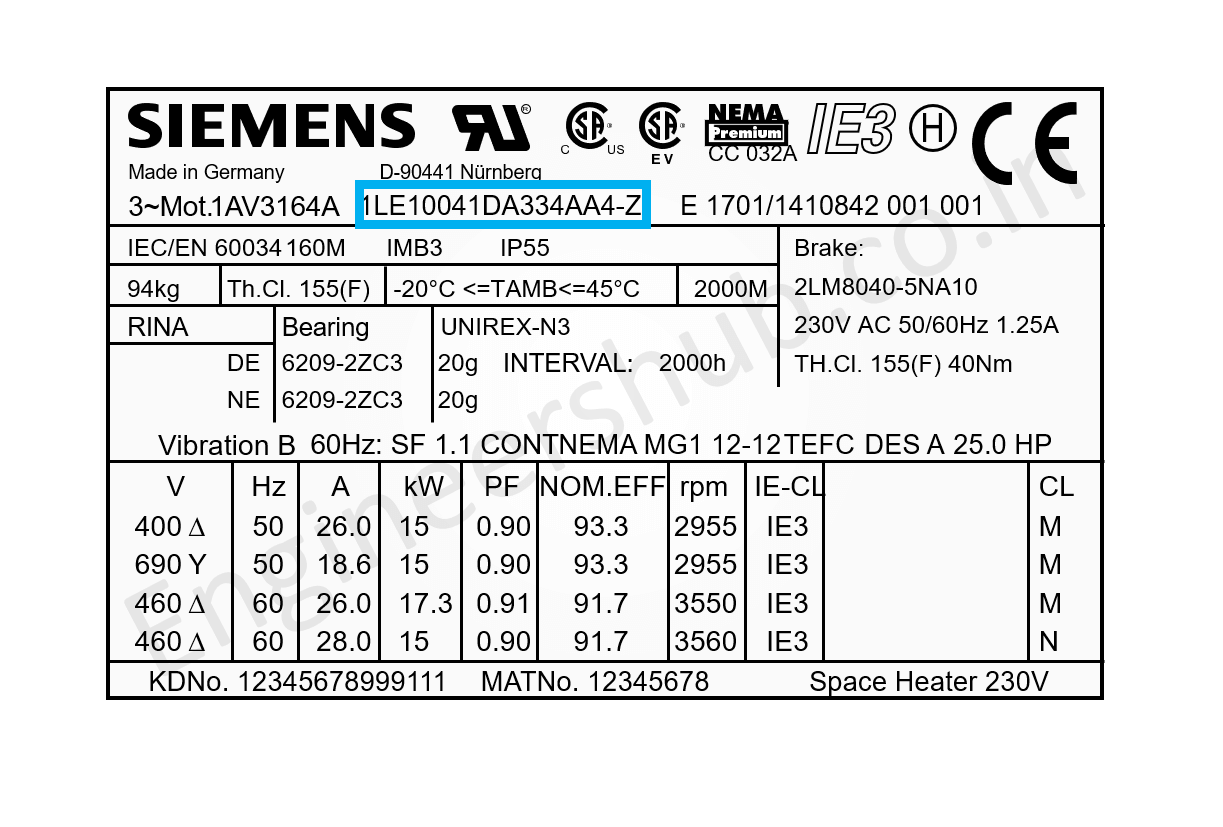
Wrapping Up
Usually, manufacturing companies do have the practice to keep a record of nameplate data of all the motors in the factory.
Yes – you read it right.
All the motor’s data they store in their computer.
The motor continuously running in the factory may get some problems like winding damage, bearing issues, etc. In such cases, the motor’s data helps to order a replica of the operational motor.
Related Articles


